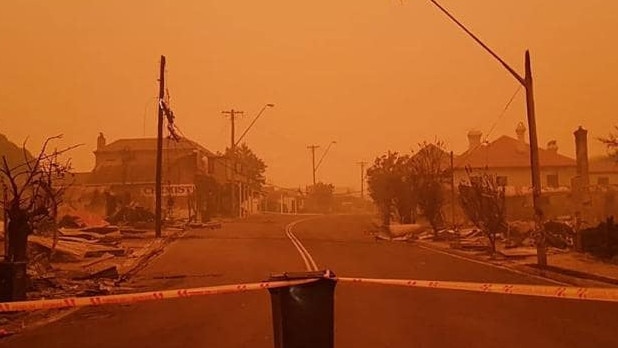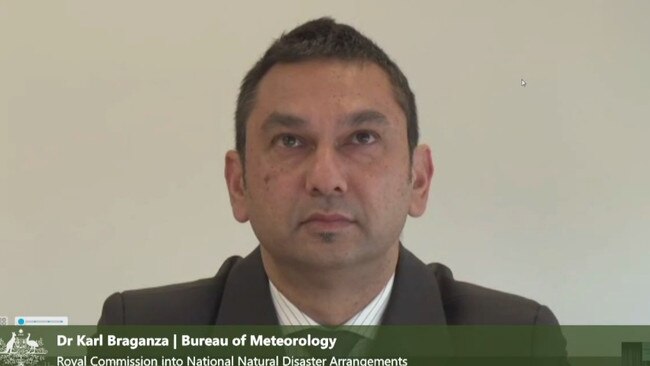Bushfire inquiry: Horror season ‘not a one-off event’
The BoM’s head of climate modelling warns the bushfire season is starting three months earlier than normal.

Last summer was the most damaging fire season in NSW and as bad as any in Australia's history, but it will not be a “one-off”, the Royal Commission into Natural Disaster Arrangements has heard.
On the first day of a landmark inquiry into the horror that killed 33 people and destroyed more than 3000 homes, the Bureau of Meteorology’s head of climate modelling, Karl Braganza, warned that the frequency of such events would increase.
“Since the Canberra 2003 fires, every jurisdiction in Australia have seen some really significant fire events that have challenged what we do to respond to them and have really challenged what we thought fire weather looked like preceding this period,” Dr Braganza said on Monday.
“These large fire events, when you look back over the 19th and 20th century, were not as frequent as they were this century.”
The Morrison government has promised the probe will get to the bottom of what happened in 2019-20 Black Summer, including the role of climate change, and will investigate the “consequences of longer, hotter, drier seasons and severe weather events”.
It will also recommend ways to improve resilience in the face of changing climatic conditions.
Ryan Crompton from Risk Frontiers, a body that researches and models disasters across the Asia Pacific, said the four million hectares of bushland that burnt in NSW over the summer was three times larger than any other season.
“In NSW, Black Summer has been far the most damaging season with normalised damage more than 2.5 times than the second-highest amount,” he said.
“Black Summer is expected to be comparable to the most damaging seasons (if not the most damaging) in Australia since 1925,” a Risk Frontiers report said.
The fires that rolled through Victoria were also the largest since satellite imagery became available in 2000, with the 1.2 million hectares of land destroyed only “just bigger” than the 2002-03 fire season.
CSIRO Chief Research Scientist Helen Cleugh warned the conditions Australia was experiencing were “within the projected range” of predictions the agency had forecast in the early 1990s.
She sounded the alarm that if greenhouse emissions continued on their current trajectory the temperatures experienced last year would be considered “cool” by the year 2050.
The commission was told last year was the hottest and driest year on record, with 43 extreme-heat days, compared with the previous record of 27 in 2013.
According to CSIRO modelling, even if the nation succeeds in reducing emissions, 2019’s temperatures would still be considered an “average temperature year”.
Dr Braganza said prolonged drought, lack of rain and a protracted period of record high temperatures had created a perfect storm for tinderbox-like conditions that burned in large swathes across the continent.
“If you look at December, over that month we had temperatures either in the 90th percentile or highest on record and that is the background setting for the fires we saw around the country in that month and earlier in spring,” he said.
The south coast of NSW and parts of eastern Victoria are now seeing fire weather three months earlier than normal, with those conditions arriving towards the end of winter rather than spring, the commission heard.

Mr Crompton said in terms of fatalities caused by natural disasters bushfires ranked fourth, accounting for 10 per cent of deaths between 1900 and 2015.
Extreme heat caused the most deaths with 4555 fatalities.
Commission chair and retired air chief marshal Mark Binskin said the commission had visited many of the communities affected by the fires in the lead up to the hearings.
He acknowledged the disaster’s impact had been compounded by the outbreak of the coronavirus pandemic and said commissioners were “acutely aware” of the inevitability of the next bushfire season.
As a result, the inquiry will work to a short timeline so recommendations, due by August 31, can be implemented next summer.
As of Friday 73 notices to produce documents have been answered and a further 159 have been acknowledged.
The commission has received 16,000 documents consisting of 200,000 pages.
Six witnesses are expected to appear on Tuesday, including residents from the affected Victorian coastal town of Mallacoota, the Red Cross and Australian Financial Complaints Authority.




To join the conversation, please log in. Don't have an account? Register
Join the conversation, you are commenting as Logout